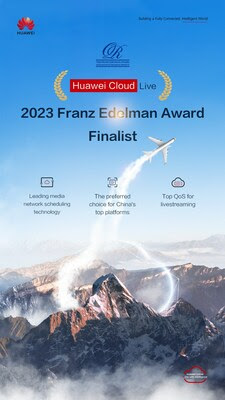David Crosby, one of the most influential rock singers of the 1960s and ’70s with the Byrds and Crosby, Stills, Nash & Young, has died at age 81, Variety reported Thursday, citing a statement from Crosby’s wife.
“It is with great sadness after a long illness, that our beloved David (Croz) Crosby has passed away,” Variety quoted his wife, Jan Dance, as saying in the statement.
Crosby’s UK-based representatives could not immediately be reached for comment by Reuters.
Crosby was a founding member of two revered rock bands: the country- and folk-influenced Byrds, for whom he co-wrote the hit “Eight Miles High,” and CSNY, who defined the smooth side of the Woodstock generation’s music. He was inducted into the Rock and Roll Hall of Fame as a member of both groups.
Musically, Crosby stood out for his intricate vocal harmonies, unorthodox open tunings on guitar and incisive songwriting. His work with both the Byrds and CSN/CSNY blended rock and folk in new ways, and their music became a part of the soundtrack for the hippie era.
“I don’t know what to say other than I’m heartbroken to hear about David Crosby. David was an unbelievable talent — such a great singer and songwriter. And a wonderful person,” Beach Boys leader Brian Wilson said on Twitter.
Personally, Crosby was the embodiment of the credo “sex, drugs and rock ‘n’ roll,” and a 2014 Rolling Stone magazine article tagged him “rock’s unlikeliest survivor.”
Tragedies, illnesses
In addition to drug addictions that ultimately led to a transplant to replace a liver worn out by decades of excess, his tumultuous life included a serious motorcycle accident, the death of a girlfriend, and battles against hepatitis C and diabetes.
“I’m concerned that the time I’ve got here is so short, and I’m pissed at myself, deeply, for the 10 years — at least — of time that I wasted just getting smashed,” Crosby told the Los Angeles Times in July 2019. “I’m ashamed of that.”
He fell “as low as a human being can go,” Crosby told the Times.
He also managed to alienate many of his famous former bandmates for which he often expressed remorse in recent years.
His drug habits and often abrasive personality contributed to the demise of CSNY, and the members eventually quit speaking to each other. In the 2019 documentary “David Crosby: Remember My Name,” he made clear he hoped they could work together again but conceded the others “really dislike me, strongly.”
Crosby fathered six children — two as a sperm donor to rocker Melissa Etheridge’s partner and another who was placed for adoption at birth and did not meet Crosby until he was in his 30s. That son, James Raymond, would eventually become his musical collaborator.
“Thank you @thedavidcrosby I will miss you my friend,” Etheridge said on Twitter alongside a photo of the two of them.
Looking back at the turbulent 1960s and his life, Crosby told Time magazine in 2006: “We were right about civil rights; we were right about human rights; we were right about peace being better than war. … But I think we didn’t know our butt from a hole in the ground about drugs and that bit us pretty hard.”
Music was ‘joyous’
Crosby was born August 14, 1941, in Los Angeles. His father was a cinematographer who won a Golden Globe for “High Noon” in 1952, and his mother exposed him to the Weavers, a folk group, and to classical music.
As a teenager, Crosby wrote, playing music “was absolutely joyous to me. I always loved it. I always will love it.”
After a stay in New York’s Greenwich Village music scene, Crosby was back in California in 1963 and helped Roger McGuinn start the Byrds, whose first hit, a cover of Bob Dylan’s “Mr. Tambourine Man,” came in 1965, followed by “Turn! Turn! Turn!”
Crosby was kicked out of the Byrds because the band did not want to play his songs, with the flashpoint being “Triad,” about a menage a trois, and disputes over onstage political rants.
Crosby and Stephen Stills, whose band with Neil Young, Buffalo Springfield, had fallen apart, then began playing together. Graham Nash of the Hollies, who met Crosby in 1966 and went on to become his closest collaborator and a closer friend, joined them. Their first album, “Crosby, Stills and Nash,” was a big seller in 1969 with such songs as “Marrakesh Express,” “Suite: Judy Blue Eyes” and “Guinnevere.”
Guitarist and singer-songwriter Young fell in with them that year, and Crosby, Stills, Nash & Young came to be considered one of the greatest amalgams of talent in rock history.
Their second performance together was the landmark Woodstock music festival in 1969, and their 1970 album “Deja Vu” contained the hits “Teach Your Children,” “Woodstock” and one of Crosby’s signature songs, “Almost Cut My Hair.”
Girlfriend’s death
As CSNY was taking off, Crosby was in a drug-fueled downward spiral caused by the 1969 death of girlfriend Christine Hinton in a car accident.
“I had no way to deal with that, nothing in my life had prepared me for that,” wrote Crosby, who had added cocaine and heroin to his drug repertoire.
The next decade was a blur of drug arrests, album releases and women. “I was not into being monogamous — I made that plain to everybody concerned. I was a complete and utter pleasure-seeking sybarite,” he wrote in his autobiography.
Crosby had a daughter with a girlfriend but soon left her for Jan Dance, who moved in with him in 1978. That relationship lasted and they had a son, Django, in 1995.
Crosby introduced Dance to heroin and the free-basing method of smoking cocaine. “We went down the tubes together, but we did it with our hearts intertwined,” he wrote.
There were several failed attempts at rehab, and Crosby developed a reputation as a bloated, hapless addict. In 1985, Nash told Rolling Stone: “I’ve tried everything — extreme anger, extreme compassion. I’ve gotten 20 of his best friends in the same room with him. I’ve tried hanging out with him. I’ve tried not hanging out with him.”
Crosby beat a series of drug charges but lost in Texas after being arrested with a drug pipe and gun at a club in Dallas and went to prison in 1985. The prison system required him to shave his trademark bushy mustache, but he found solace in playing in the prison band during his year of incarceration.
“Playing and singing straight was an unfamiliar feeling,” he wrote. “I hadn’t been onstage with a drug-free system in more than 25 years.”
After his release, Crosby told People magazine he had beaten his addictions.
“Most people who go as far as I did with drugs are dead,” he said. “Hard drugs will hook anyone. I don’t care who you are. … I have a Ph.D. in drugs.”
He was also arrested on gun and marijuana charges in New York in 2004.
In 2014 he released “Croz,” his first solo album since 1993, but his tour to promote the record was interrupted in February by heart surgery.
He continued recording and was an active presence on Twitter, in addition to writing an advice column in Rolling Stone.
In March 2021, The Guardian reported that Crosby sold the recorded music and publishing rights to his entire music catalog to Irving Azoff’s Iconic Artists Group for an undisclosed sum. He was quoted as saying that the COVID-19 pandemic prevented him from playing concerts and that the widespread use of music streaming “stole my money.”
Source: Voice of America




